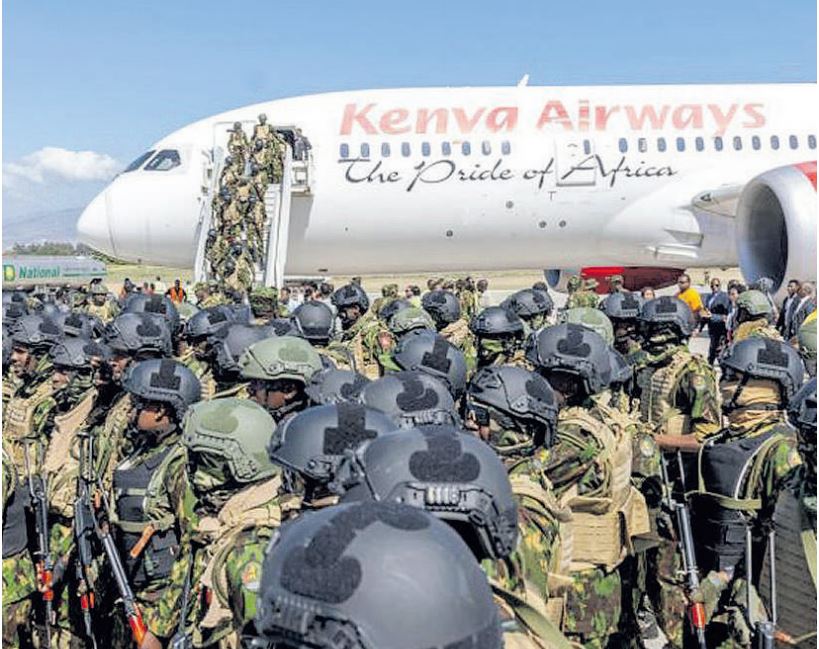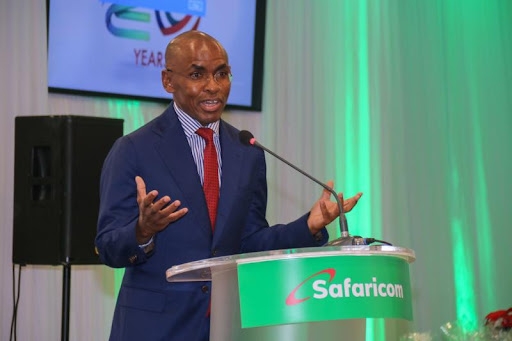
Kenya stands at a critical crossroads in regional and global security, balancing domestic threats from terrorism with growing international peacekeeping responsibilities. As global threats evolve, its strategic partnerships and proactive defences remain vital to national and international security.
Through critical intelligence sharing, military training and joint exercises, the US is currently playing a central role in enhancing Kenya’s security readiness. This alliance is not just strategic; it is essential to safeguarding regional and global stability.
This spring, US and African forces intensified military collaboration through a series of large-scale, multinational exercises across the continent with the aim of enhancing regional partnerships to defeat terrorism.
Within its own borders and just beyond its coastline, Kenya faces a persistent threat from al Shabaab and its affiliates. Alongside this, unrest brews in three of its neighbours — South Sudan, Ethiopia and Somalia — casting a long shadow over national stability.
Yet while Kenya confronts these dangers close to home, it also projects strength and commitment abroad. Its peacekeepers have served in 16 countries across Africa, the Middle East, the Balkans and Asia. Today, they lead the Multinational Security Support Mission in Haiti, underscoring Kenya’s growing role on the international stage.
This dual responsibility — protecting the homeland while upholding global peace — demands unyielding vigilance. Maintaining a state of constant readiness is no simple feat. But for Kenya, it’s not a choice. It’s a necessity. And it all begins with tackling the most immediate threat: terrorism.
Kenya’s ranking in the Global Terrorism Index has steadily improved since peaking in 2015 — and the country continues to be prepared for future threats. In 2013, the Westgate Mall attack left 71 people dead and more than 200 injured. Six years later, a deadly 22-hour siege at Nairobi’s DusitD2 complex claimed 27 lives, underscoring the persistent threat. So how can Kenya act to prevent another terrorist atrocity?
Terrorists don’t wear uniforms or stand out. They vanish into the crowd. That is what makes them so dangerous. To outpace this threat, security forces must stay one step ahead: By listening to community warnings, tracking known suspects and spotting early signs of radicalisation before it’s too late.
Beyond our borders, the terrain is even more challenging where often porous borders make it very difficult to track terrorists. Without sustained international collaboration, these regions could remain breeding grounds for radicalisation, posing a continued threat not just to local populations, but also to nations like Kenya that are in the terrorists’ crosshairs.
Kenya relies on a crucial framework: intelligence, surveillance, target acquisition and reconnaissance, a system designed to detect threats before they strike. This system maps out cells and monitors regions where radical activity is most likely to unfold. Kenya’s own anti-terrorism units work tirelessly to detect early signs of radicalisation, monitor potential hotspots and track individuals of interest.
In the fight against terrorism, information is a weapon — and sharing it is key. Today, Kenya is part of an expanding global intelligence network that links allies through real-time data exchange. If US agencies uncover credible threats, that intelligence is swiftly relayed to Kenya’s security services — and the cooperation flows both ways.
But defeating terrorism isn’t Kenya’s only mandate. The nation’s military and security forces are also on the frontline of peacekeeping and conventional defence, often in complex and volatile environments. Equipping these forces with the right tools, training and strategic support is crucial — and once again, the role of international allies is indispensable.
In March, “Justified Accord”, an annual multi-national exercise brought together 1,300 troops from more than 15 nations to Kenya, Djibouti, and Tanzania, focusing on regional security and joint operational readiness. Currently, “African Lion”, a massive joint exercise spanning Morocco, Tunisia, Senegal, and Ghana, is underway to boost readiness and interoperability under the US European Command’s DEFENDER series.
In April the African Land Forces Summit took place in Ghana, bringing together leaders from nearly 40 African nations to deepen partnerships and address shared challenges. In the same month, “Flintlock” united nearly 30 partner countries in Côte d’Ivoire to enhance counterterrorism coordination alongside NATO and regional forces. And in May, “Obangame Express” will activate naval forces from 32 nations in the Gulf of Guinea, led by US Naval Forces Africa, targeting maritime threats and illegal activity along the West African coast.
Kenya and the US share a deep and dynamic defence partnership, underpinned by unrivalled intelligence sharing, providing Kenya with critical insights that bolster national security. But the relationship extends beyond this, with the US providing ongoing military support and the necessary training to effectively act on these insights.
This transfer of knowledge and capability strengthens Kenya’s operational readiness. When real-world joint operations become necessary, these exercises are vital for harmonising tactics and strategy across allied forces. They ensure that, should the need arise, troops can operate together effectively from day one.
Europeans, too, recognise the importance of joint training. The British Army Training Unit in Kenya sees the country as an ideal staging ground for military preparedness, with Kenya offering a rare diversity of training environments, from mountains to jungles and deserts.
From intelligence-sharing to multinational exercises, the US is Kenya’s foremost partner. But this is no one-sided arrangement. We have our needs and aims, and the Americans have theirs. But it is not about one country or the other getting the best of the deal. It is a mutually beneficial symbiotic relationship between two democratic allies.
As to the future of these collaborative efforts and joint relations, they should continue to grow and deepen to the benefit of Kenya, Africa and the US.
The writer, a retired colonel, served in the Kenya Airforce for 31 years after graduating as a fighter pilot in 1979. He went on to become a fighter base commander. He is a graduate of US Airforce fighter weapons school, the USAF Air Command and Staff College and the Kenya National Defence College










